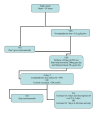Corticosteroids for severe sepsis: an evidence-based guide for physicians
- PMID: 21906332
- PMCID: PMC3224490
- DOI: 10.1186/2110-5820-1-7
Corticosteroids for severe sepsis: an evidence-based guide for physicians
Abstract
Septic shock is characterized by uncontrolled systemic inflammation that contributes to the progression of organ failures and eventually death. There is now ample evidence that the inability of the host to mount an appropriate hypothalamic-pituitary and adrenal axis response plays a major in overwhelming systemic inflammation during infections. Proinflammatory mediators released in the inflamed sites oppose to the anti-inflammatory response, an effect that may be reversed by exogenous corticosteroids. With sepsis, via nongenomic and genomic effects, corticosteroids restore cardiovascular homeostasis, terminate systemic and tissue inflammation, restore organ function, and prevent death. These effects of corticosteroids have been consistently found in animal studies and in most recent frequentist and Bayesian meta-analyses. Corticosteroids should be initiated only in patients with sepsis who require 0.5 μg/kg per minute or more of norepinephrine and should be continued for 5 to 7 days except in patients with poor hemodynamic response after 2 days of corticosteroids and with a cortisol increment of more than 250 nmol/L after a standard adrenocorticotropin hormone (ACTH) test. Hydrocortisone should be given at a daily dose of 200 mg and preferably combined to enteral fludrocortisone at a dose of 50 μg. Blood glucose levels should be kept below 150 mg/dL.
Figures
Similar articles
-
The Role of ACTH and Corticosteroids for Sepsis and Septic Shock: An Update.Front Endocrinol (Lausanne). 2016 Jun 20;7:70. doi: 10.3389/fendo.2016.00070. eCollection 2016. Front Endocrinol (Lausanne). 2016. PMID: 27379022 Free PMC article. Review.
-
The use of corticosteroids in severe sepsis and acute respiratory distress syndrome.Ann Med. 2002;34(7-8):582-9. doi: 10.1080/078538902321117805. Ann Med. 2002. PMID: 12553498 Review.
-
The hypothalamic-pituitary-adrenal axis of patients with severe sepsis: altered response to corticotropin-releasing hormone.Crit Care Med. 2001 Feb;29(2):310-6. doi: 10.1097/00003246-200102000-00017. Crit Care Med. 2001. PMID: 11246311
-
Surviving sepsis campaign: international guidelines for management of severe sepsis and septic shock: 2012.Crit Care Med. 2013 Feb;41(2):580-637. doi: 10.1097/CCM.0b013e31827e83af. Crit Care Med. 2013. PMID: 23353941
-
Adrenal insufficiency in sepsis.Rev Bras Ter Intensiva. 2006 Mar;18(1):86-94. Rev Bras Ter Intensiva. 2006. PMID: 25310332 English.
Cited by
-
Design and conduct of the activated protein C and corticosteroids for human septic shock (APROCCHSS) trial.Ann Intensive Care. 2016 Dec;6(1):43. doi: 10.1186/s13613-016-0147-3. Epub 2016 May 6. Ann Intensive Care. 2016. PMID: 27154719 Free PMC article.
-
Navigating the Landscape of Hydrocortisone Administration in Septic Shock: Current Concepts and Future Directions.Cureus. 2023 Dec 3;15(12):e49870. doi: 10.7759/cureus.49870. eCollection 2023 Dec. Cureus. 2023. PMID: 38169849 Free PMC article. Review.
-
Chemical mimetics of the N-degron pathway alleviate systemic inflammation by activating mitophagy and immunometabolic remodeling.Exp Mol Med. 2023 Feb;55(2):333-346. doi: 10.1038/s12276-023-00929-x. Epub 2023 Feb 1. Exp Mol Med. 2023. PMID: 36720915 Free PMC article.
-
Current concept of abdominal sepsis: WSES position paper.World J Emerg Surg. 2014 Mar 27;9(1):22. doi: 10.1186/1749-7922-9-22. World J Emerg Surg. 2014. PMID: 24674057 Free PMC article.
-
Recent Data about the Use of Corticosteroids in Sepsis-Review of Recent Literature.Biomedicines. 2024 Apr 30;12(5):984. doi: 10.3390/biomedicines12050984. Biomedicines. 2024. PMID: 38790946 Free PMC article. Review.
References
-
- Chrousos GP. The hypothalamic-pituitary-adrenal axis and immune-mediated inflammation. N Engl J Med. 1995;322(20):1351–1362. - PubMed
LinkOut - more resources
Full Text Sources
Other Literature Sources


